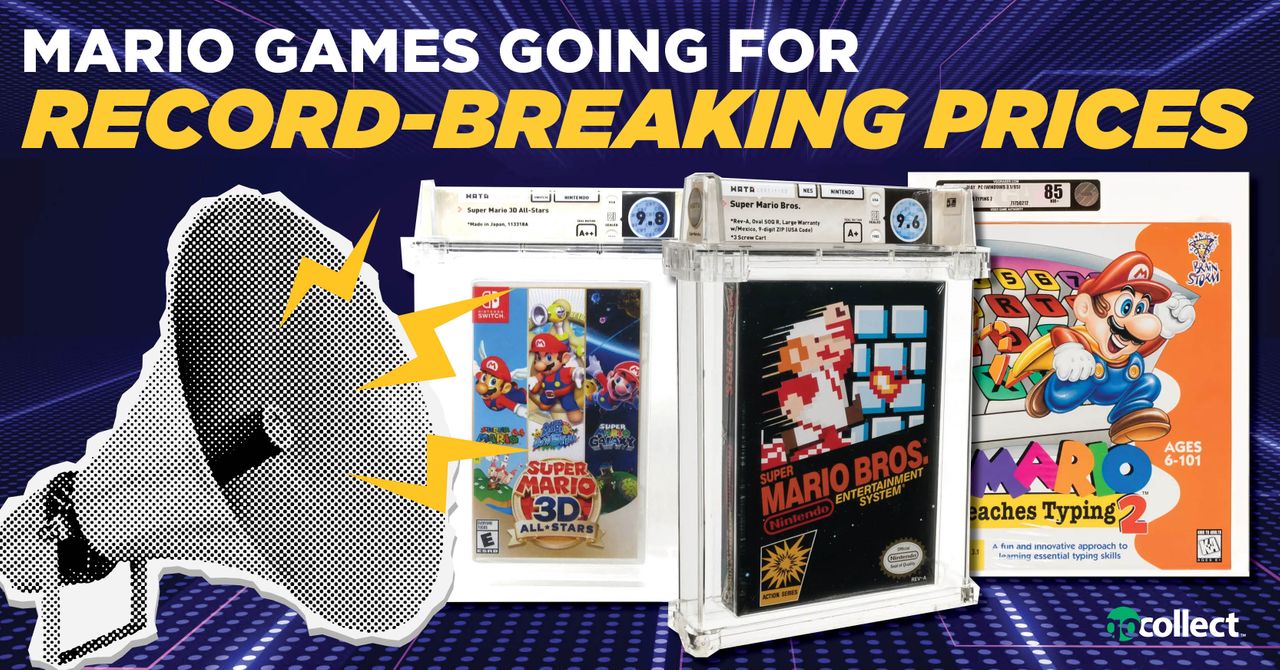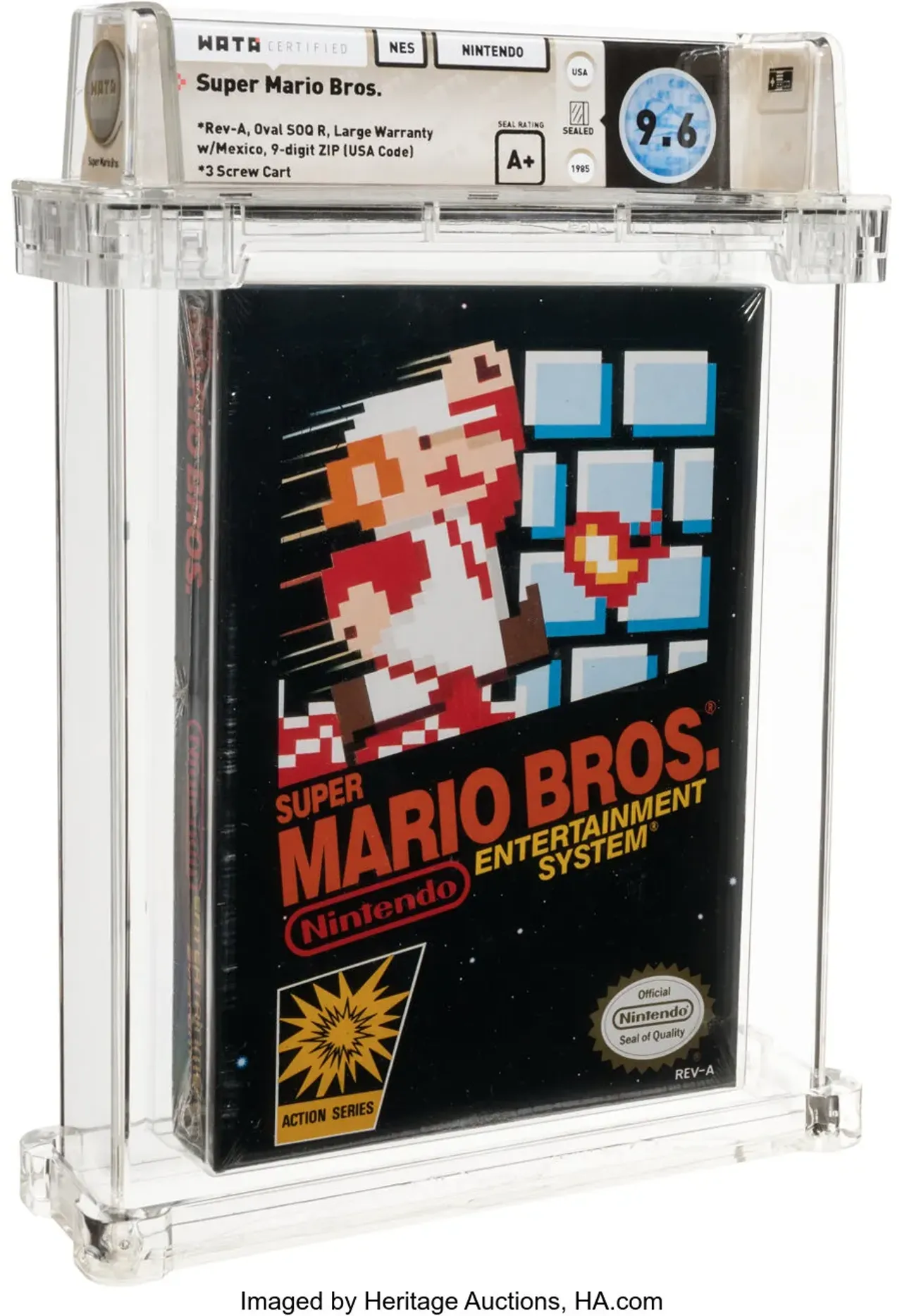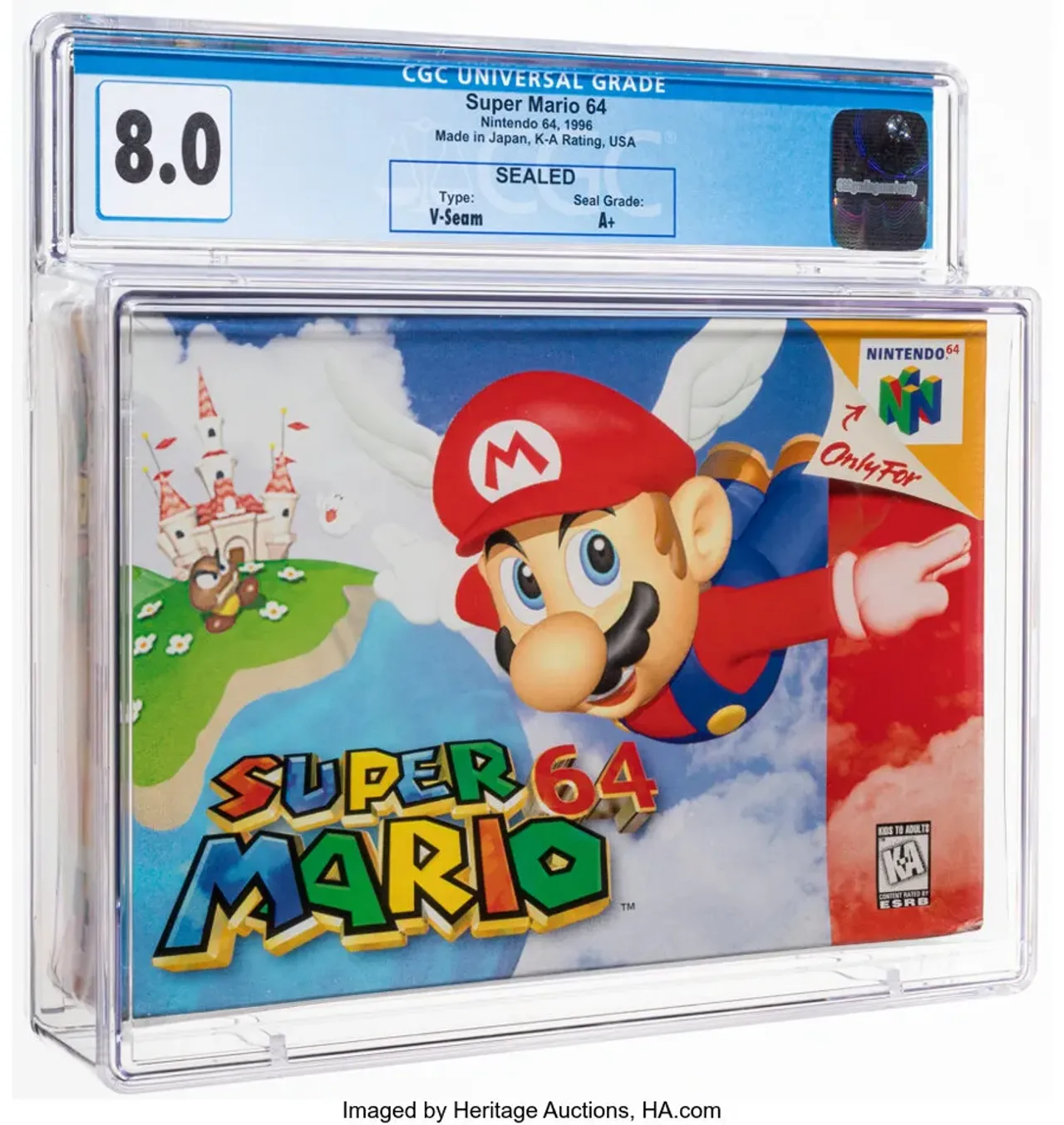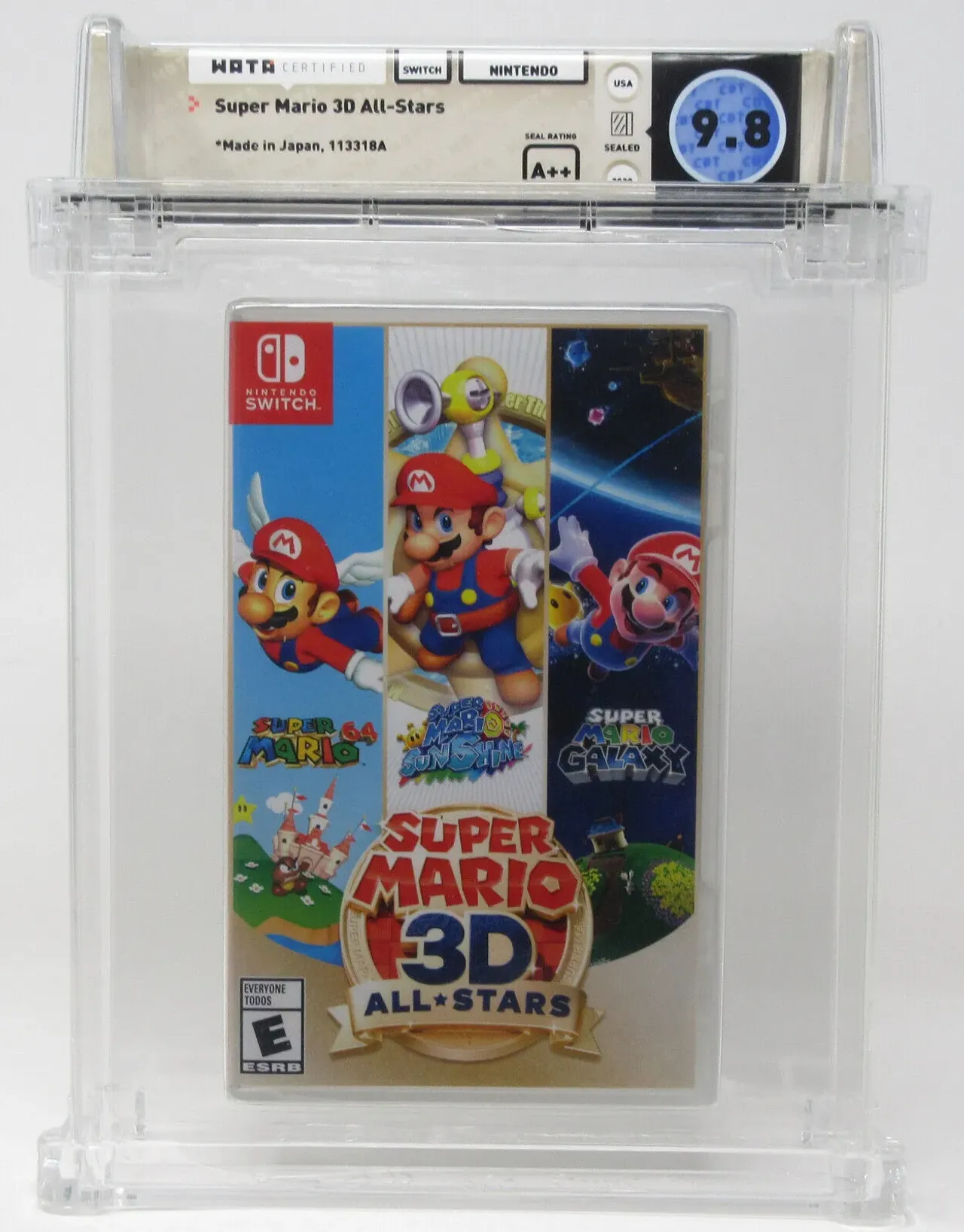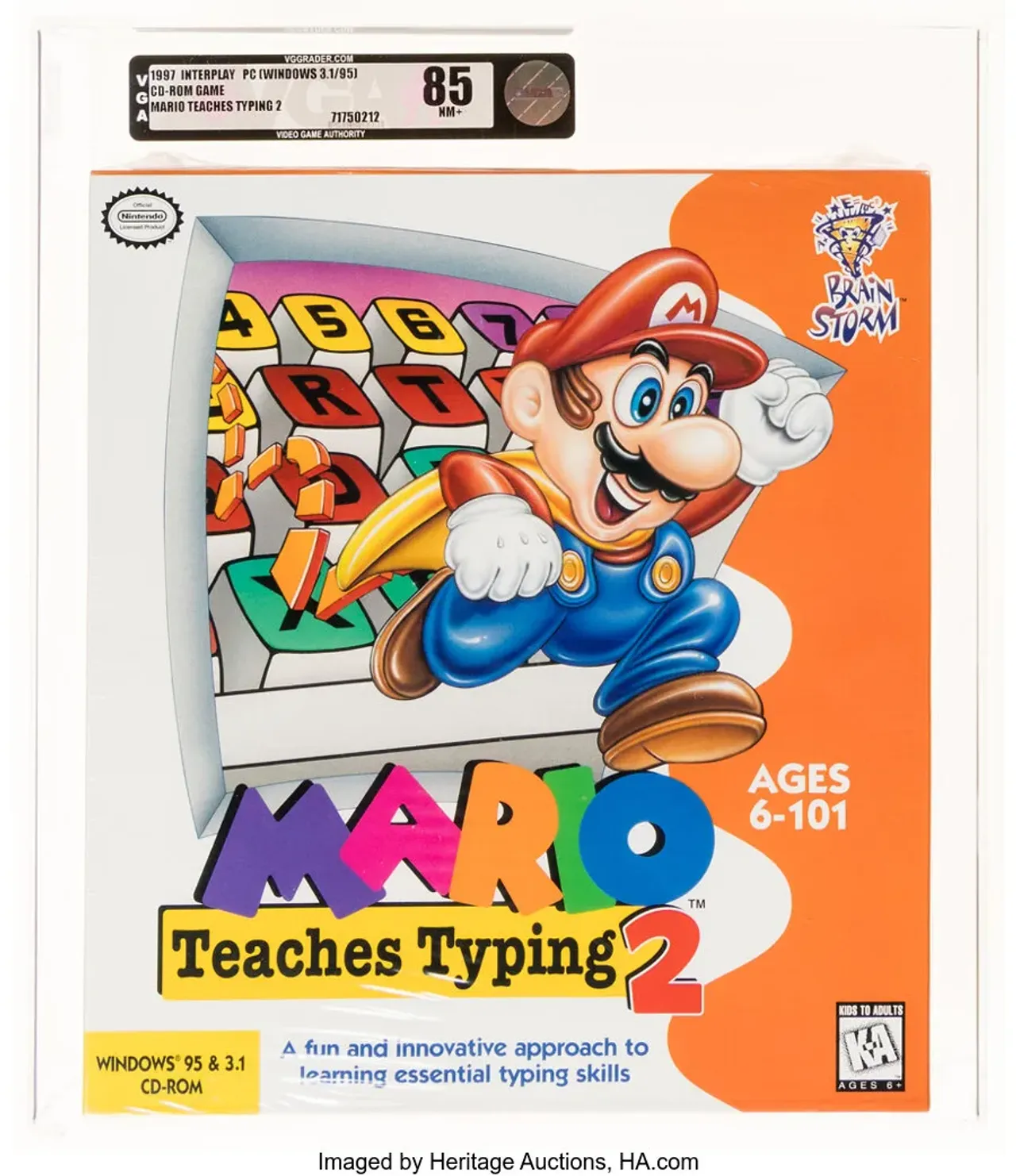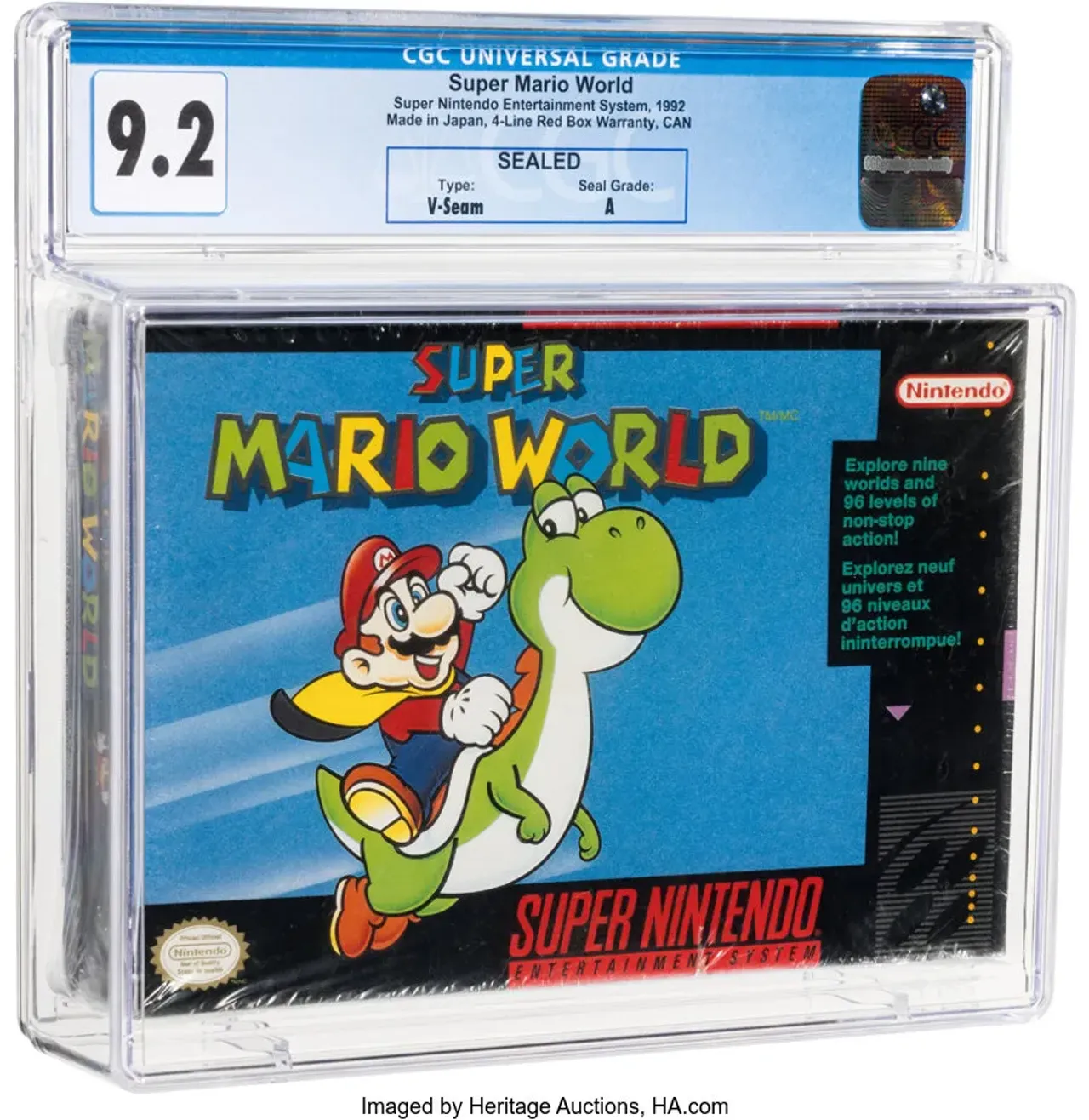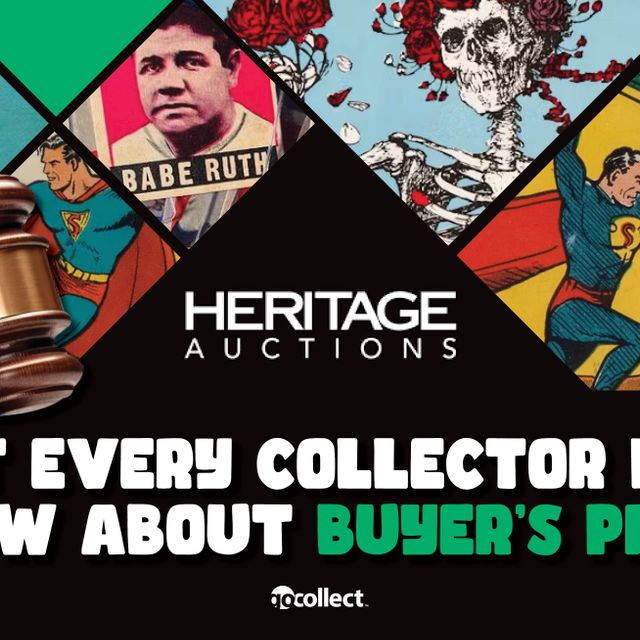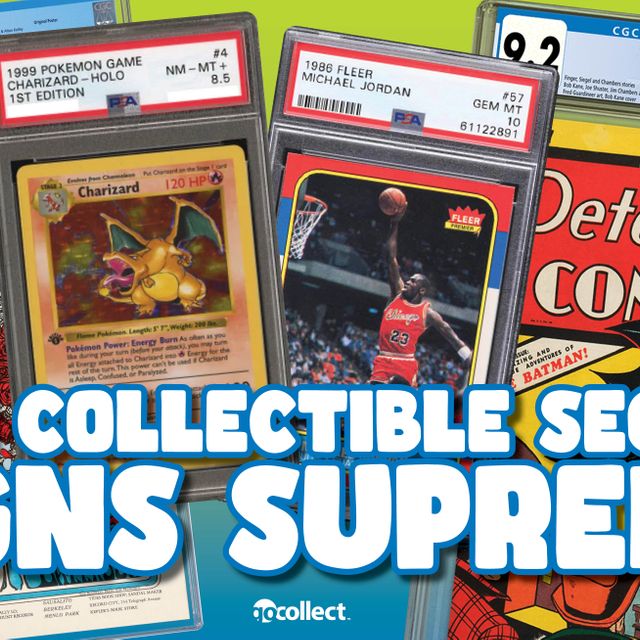There are few gaming mascots as instantly recognizable and widely beloved as Mario. He first appeared in Donkey Kong (1981). Nintendo director Shigeru Miyamoto originally named the character “Mr. Video,” a named he dropped after reasoning that it was so bad it would lead to the character “disappearing off the face of the Earth”. The character was instead named “Jumpman” at first, and before long, Mario – named after Mario Arnold Segale, an American real estate tycoon who was the landlord of Nintendo’s US headquarters.
Mario’s iconic appearance was initially designed for practical reasons as much as aesthetic ones – the character’s tiny 16x16 pixel sprite meant a moustache and overalls were the clearest way to represent his face and body on-screen.
Since then, Mario has featured in more than 200 games and stayed relevant in the gaming world over four decades since his debut. This, combined with his enduring popularity, has made many of these games highly collectable, especially still-sealed copies of originals. WATA or CGC grading is key for both authentication and quality appraisal of high-value games. Anything over 9.0 is of exceptional quality and likely to boost the price of an item greatly.
The 1980s Games
The 80s games are a goldmine for collectors. Donkey Kong was originally an arcade game, but was ported to countless consoles and home computers over the decade. Some of these releases fetch big bucks - a sealed Donkey Kong for Intellivision, WATA graded 9.6, sold for $1,400 in 2023. Today, that same copy has dropped between 200-500 dollars in grade.
Though Mario might have started with Donkey Kong, it was Super Mario Bros. (1985) for the Nintendo Entertainment System that solidified him as a gaming icon. The game was an astronomical success, and played a key role in reviving the medium of video games after the infamous crash of 1983, as well as introducing mechanics that continue to influence sidescrolling platformers to this day.
In August 2021, a near-mint sealed copy of the original Super Mario Bros. sold for a staggering $2 million. The specific production variant, condition, and sheer rarity of that copy (and perhaps a bit of auction hype) all contributed to its record-breaking price. It remains one of the most expensive video games ever sold. Not every copy will go for that much, of course, but anyone with a sealed game box could be sitting on a goldmine.
Super Mario Bros. 2 is an interesting case. The game that American audiences received was not, in fact, originally a Mario game – it was the Japanese platformer Yume Kōjō: Doki Doki Panic. Nintendo deemed that the real Super Mario Bros. sequel was too hard for international audiences – we would have to wait until 1993’s Super Mario All-Stars, which featured a remake of the original titled Super Mario Bros.: The Lost Levels. Despite its unusual status in the Mario canon, the American Super Mario Bros. 2 was a popular and beloved game, and WATA-graded sealed copies with a Round SOQ have been known to sell for hundreds of thousands of dollars. Oval SOQ copies in the top grade will fetch upwards of $20,000.00
Which Other Games Fetch Big Bucks?
While the $2 million sale of Super Mario Bros. is hard to beat, others have come close. A WATA 9.8 A++ sealed Super Mario 64 — the 1996 Nintendo 64 classic that helped define 3D platforming — sold for $1.56 million in 2021. That was the most expensive game ever sold at the time – until the $2 million Super Mario Bros. broke that record less than a month later! We haven't seen a 9.8 A++ sell since then, but a 9.6 A++sealed copy sold for $57,600 and a 9.6 A+ sold for $21,600 a couple of years after. An WATA 8.5 A+ sealed copy sold 3 months ago for a little over 11 thousand.
Even if you don’t have an ultra-rare production variant, a decades-old Mario game can still sell for a huge amount. A sealed copy of Super Mario World for SNES (graded WATA 9.4) sold for $125,000 in 2024, and an 8.0 A sold for $18,750 almost a year ago – not bad for a game that sold twenty million copies in its day.
If you own a particularly rare game — especially one in high-grade, sealed condition — it’s worth considering professional auction services like Heritage Auctions or Goldin. These platforms specialize in high-end collectibles and attract serious bidders, offering a better shot at maximizing value than casual online listings.
Modern Titles
While games from the 80s and 90s fetch the highest prices at auction, even very recent games can be worth quite a bit of money.
The 2020 release of Super Mario 3D All-Stars for the Nintendo Switch, which compiles Super Mario 64, Super Mario Sunshine, and Super Mario Galaxy, was deliberately limited by Nintendo as part of Mario's 35th anniversary celebration. The company ceased production after just six months, creating an artificial scarcity that has driven WATA-graded sealed copies to sell for hundreds of dollars consistently – a WATA 10 copy even sold for a cool $5000 in 2023.
Similarly, 2010's Super Mario All-Stars Limited Edition for the Wii, released for Mario's 25th anniversary, has become a collector's item. Including a CD of Mario music and a history booklet alongside the game, factory-sealed copies now typically sell for over $100.
And The Rest
Of course, with such a long-running series, the world of Mario extends far beyond the classic games. Spin-offs like Mario Kart and Mario Party, handheld titles like Super Mario Land, and even the more unusual spinoffs like Mario Teaches Typing and Mario Tennis can all go for surprisingly high prices. Basically, if a game has Mario’s face and name on the box and it’s sealed, someone out there is going to pay big money for it.
Enjoyment vs Investment
Huge price increases in recent years have transformed Mario collecting from a hobby for fans into a potential investment strategy. As sealed games from past decades become ever rarer, their value is sure to continue to rise, and even newer titles, kept in mint condition, could be worth a small fortune one day.
Of course, it’s not all about money – for some collectors, it’s not about money at all. For those of us who grew up with Mario, owning a pristine copy of a childhood favorite like Super Mario 64 is a great way to preserve a piece of gaming history.
So whether you’re blowing $2 million on an ultra-rare record-breaking auction or just shelling out $60 for a beat-up old box, the world of Mario has something to offer.
